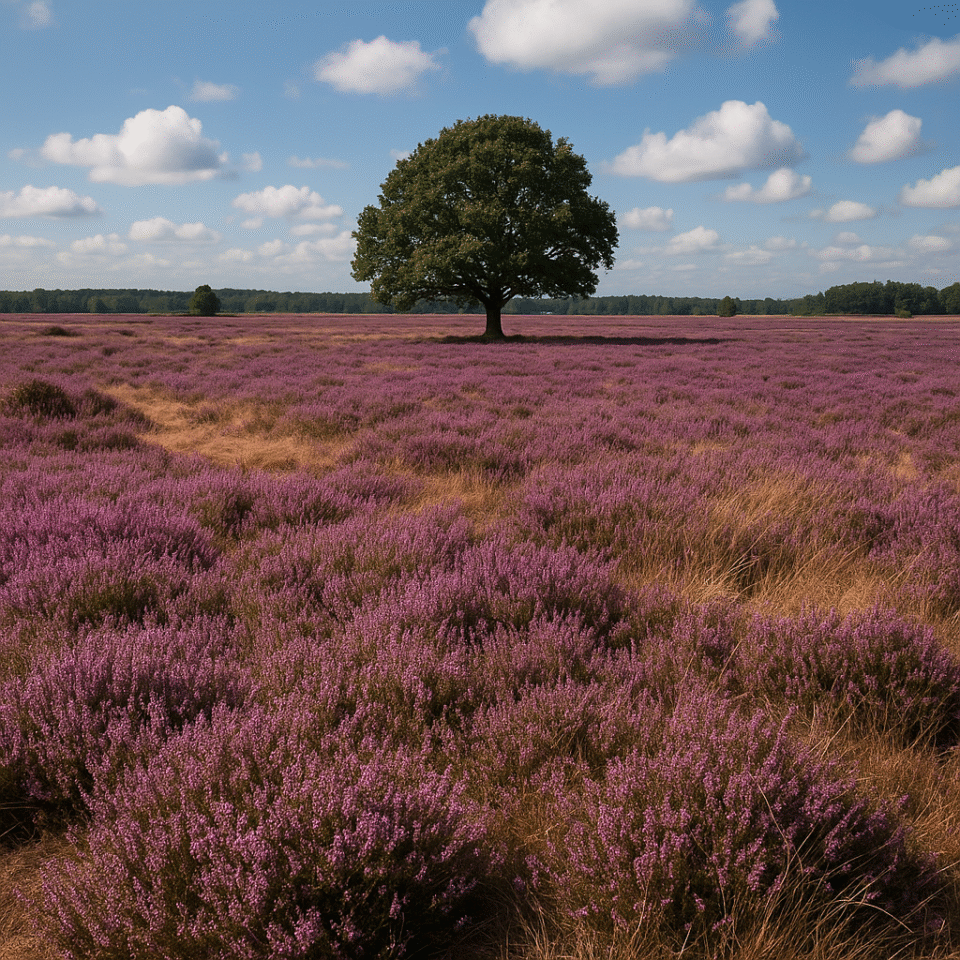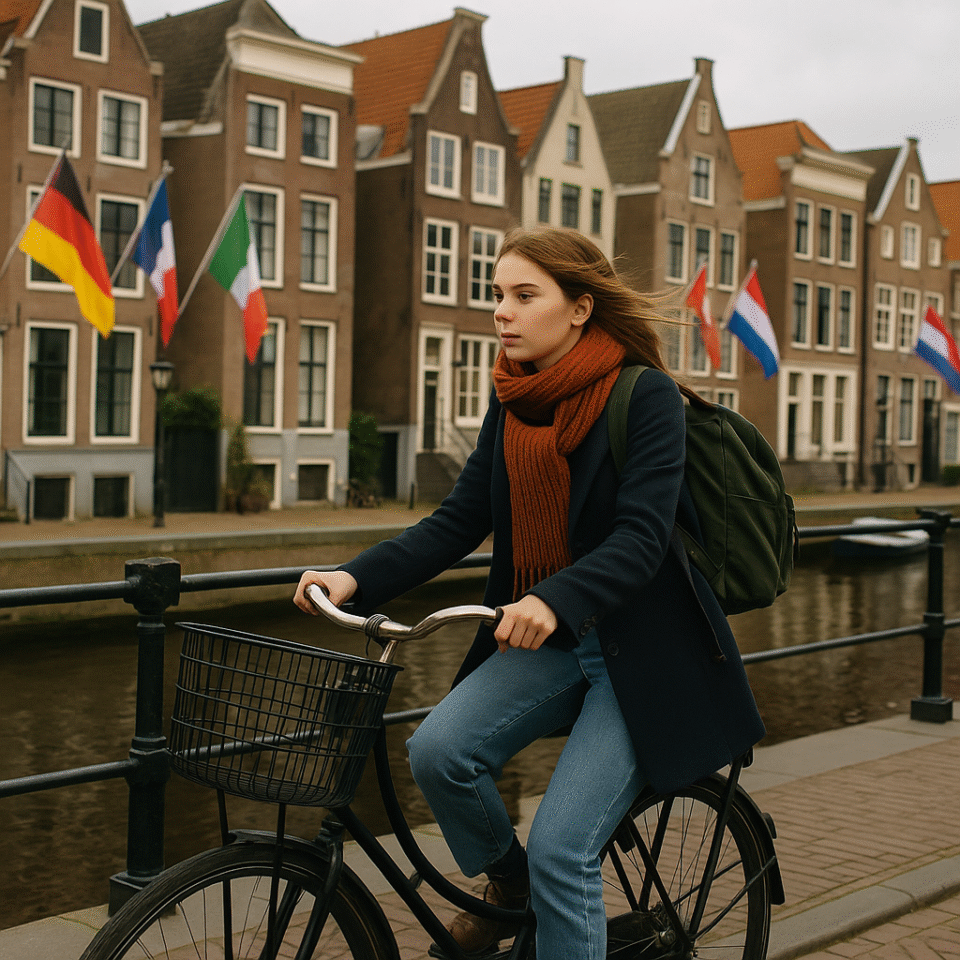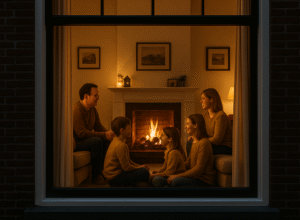Hidden Northeast: Discovering Drenthe’s Charm
The Netherlands offers twelve distinct provinces, each with its own character and attractions. Journey with us to Drenthe – a northeastern province where prehistoric monuments, expansive natural areas, and peaceful rural life create an authentic Dutch experience beyond the familiar tourist destinations.

In the quiet northeastern corner of the Netherlands lies Drenthe, a province often overlooked by international visitors focused on Amsterdam’s canals or Rotterdam’s modern architecture. Yet this tranquil region contains some of the country’s most significant prehistoric monuments, beautiful natural landscapes, and a distinctly relaxed pace of life that reveals a different side of Dutch culture.
With just over 500,000 residents, Drenthe is the second least populated province in the Netherlands (after Zeeland). Covering approximately 2,680 square kilometers (making it the 9th largest province), Drenthe’s relatively low population density offers something increasingly rare in the densely populated Netherlands: space to breathe. Here, visitors can experience peaceful forests, uninterrupted cycling paths, and villages where life moves at a gentler pace.

A Timeline Stretching to Prehistory
Megalithic Monuments
Drenthe’s history extends thousands of years into the past, with evidence of human settlement dating to prehistoric times. The province is renowned for its hunebedden – megalithic tombs constructed during the Neolithic period around 3400 BCE. These impressive stone structures, often called “Dutch dolmens,” represent the Netherlands’ oldest visible monuments and are primarily concentrated in Drenthe.
The largest hunebed, known as D27, can be found near the village of Borger at the Hunebedcentrum, a museum dedicated to these remarkable structures. For American visitors accustomed to relatively recent historical landmarks, these ancient monuments offer a profound connection to Europe’s prehistoric past.
Provincial Evolution
Formally established as a province in 1814 during the formation of the Kingdom of the Netherlands, Drenthe’s history as a distinct region dates back much further. During the Middle Ages, it maintained a unique status as a separate entity within the larger Dutch territory. Unlike some of the Netherlands’ provinces that underwent significant boundary changes over centuries, Drenthe has maintained relatively stable borders, contributing to its strong regional identity.
Natural Landscapes: Heathlands and Forests
Diverse Ecosystems
Drenthe’s landscape features remarkable diversity within a compact area. The province includes:
- Extensive heathlands (particularly beautiful in late summer when purple blooms dominate)
- Dense forests covering approximately 10% of the province
- Peat bogs and wetland areas
- Gently rolling countryside
- Small streams and lakes
The Dwingelderveld National Park deserves special mention as the largest wet heathland area in Western Europe. For American visitors accustomed to national parks measured in thousands of square miles, the Netherlands’ compact nature reserves might initially seem modest, but their ecological significance and beauty are substantial.
Seasonal Attractions
Like the rest of the Netherlands, Drenthe experiences a temperate maritime climate with distinct seasons. Winters are cool but rarely extreme (average January temperatures hover around 35°F/2°C), while summers are pleasant rather than hot (average July temperatures reach around 70°F/21°C). Rainfall is distributed throughout the year, and the region’s slightly elevated position in the northeastern Netherlands means it occasionally experiences slightly cooler temperatures than coastal areas.
Urban Centers and Village Life
Assen: The Provincial Capital
Assen serves as Drenthe’s capital and largest city, though with approximately 70,000 residents, it maintains a distinctly small-city atmosphere compared to major Dutch urban centers. Founded around a medieval monastery, today’s Assen combines historical architecture with modern amenities.
The city is perhaps best known internationally as the home of the TT Circuit Assen, which hosts the Dutch TT (Tourist Trophy) motorcycle races – one of the most prestigious events in the MotoGP calendar. This annual June event draws motorcycle enthusiasts from around the world, temporarily transforming the otherwise quiet provincial capital.
Other Significant Settlements
- Emmen: The province’s second-largest city (population ~57,000) features the wildly popular Wildlands Adventure Zoo and serves as an important regional commercial center.
- Hoogeveen: With around 55,000 residents, this planned city developed around peat extraction in the 17th century.
- Meppel: A charming small city (population ~33,000) with picturesque canals and historic architecture.
- Coevorden: One of the Netherlands’ oldest cities, featuring a restored medieval castle and significant history as a fortified border town.
Cultural Heritage Beyond Time
Architectural Treasures
Beyond the prehistoric hunebedden, Drenthe boasts remarkable architectural heritage spanning centuries:
- Historic brinkdorpen (village greens) surrounded by traditional farmhouses
- The stately Havezathe manor houses scattered throughout the countryside
- Well-preserved village churches dating from the Middle Ages
- The iconic Saxon farms with their characteristic shared roof covering both living quarters and barn areas
For American visitors used to greater architectural uniformity within regions, Drenthe’s distinctive building styles provide fascinating insights into how geography, available materials, and cultural practices shaped the built environment over centuries.
Cultural Traditions
Drenthe maintains several distinctive cultural traditions that might interest American visitors:
- The annual TT Festival surrounding the motorcycle races
- Neuten Schait’n, a traditional Easter game involving shooting nuts
- Local dialect preservation efforts (the Drents language shares similarities with Low German)
- Agricultural festivals and harvest celebrations reflecting the region’s rural character
Regional Cuisine: Simple Yet Hearty
While Drenthe may not boast the culinary fame of some Dutch regions, its food traditions reflect the province’s rural character and northeastern heritage. As part of the northeastern Dutch cuisine region, Drenthe is known for its emphasis on meats, particularly game and various dried sausages. The province’s historically low population density allowed for abundant hunting and animal husbandry, influencing its meat-centric culinary traditions.
Local specialty foods include Drentse turf, a distinctive regional cake that makes for a perfect accompaniment to coffee during a cycling break. Visitors should also sample the metworst variations unique to different villages throughout the province. Like elsewhere in the Netherlands, hearty dishes such as stamppot (mashed potatoes with vegetables) and erwtensoep (thick pea soup) provide warming comfort, especially welcomed after a day exploring Drenthe’s heathlands or cycling its extensive paths.
Outdoor Recreation and Natural Attractions
The Cycling Province
Drenthe proudly calls itself the “Cycling Province” of the Netherlands, with over 2,100 kilometers of dedicated cycling paths winding through its varied landscapes. Unlike the flat terrain associated with much of the Netherlands, Drenthe features gentle hills and undulations that make cycling both more varied and (slightly) more challenging.
Beyond cycling, popular outdoor activities include:
- Hiking through national parks and nature reserves
- Horseback riding on designated trails
- Water recreation on lakes and canals
- Bird watching in wetland areas
- Camping at numerous sites throughout the province
Protected Areas
Drenthe houses several significant protected natural areas:
- Dwingelderveld National Park: The largest wet heathland in Western Europe
- Drents-Friese Wold National Park: Spanning the border with Friesland, featuring forests, heath, and drift sand
- Drentsche Aa National Landscape: A remarkably preserved stream valley system with traditional agricultural practices
For Americans accustomed to wilderness areas that emphasize untouched nature, Drenthe’s protected landscapes illustrate the European approach of preserving cultural landscapes that have been shaped by centuries of human interaction.
Economic Landscape
Historically, Drenthe’s economy centered on agriculture, peat extraction, and small-scale manufacturing. Today, while agriculture remains important, the province has diversified into sectors including:
- Tourism and recreation
- Healthcare and social services
- Light manufacturing and logistics
- Sustainable energy (particularly wind power)
- Small to medium enterprises
The province generally maintains lower living costs compared to the more urbanized western Netherlands (Randstad region), making it attractive for both Dutch citizens seeking more affordable housing and international residents.
Visitor’s Guide to Drenthe
Transportation and Access
Drenthe lacks its own commercial airport, but is accessible via:
- Train connections from Amsterdam, Groningen, and other major cities
- Excellent highway connections (particularly the A28)
- Regional bus networks
- Bicycle routes for the adventurous
Once in Drenthe, a combination of rental car, bicycles, and public transportation offers the most flexibility for exploration. Americans should note that public transportation in rural areas can be less frequent than in major Dutch cities, so planning ahead is essential.
Hidden Gems Worth Discovering
Beyond the better-known attractions, Drenthe offers several experiences that reward curious travelers:
- Prison Museum Veenhuizen: Exploring the unique history of the “Colonies of Benevolence,” 19th-century poverty reduction settlements
- Orvelte: A beautifully preserved historic village where traditional crafts and ways of life are maintained
- Ellert and Brammert Open Air Museum: Showcasing traditional Drenthe buildings and rural life
- The Bargerveen: A remarkable rewilded peat bog area with distinctive flora and fauna
Living in Drenthe: A Quiet Life for the Right Kind of Expat
For Americans considering a move to the Netherlands—especially those arriving under the Dutch-American Friendship Treaty (DAFT)—Drenthe offers a very different proposition than cities like Amsterdam or Utrecht. This is not the place for fast-paced networking, international meetups, or bustling startup scenes. Instead, Drenthe invites a quieter kind of life—one shaped by nature, tradition, and time.
Living here means trading convenience for calm. The cost of living is noticeably lower, housing is more spacious, and the pace of daily life is gentler. It also means fewer English speakers, fewer expats, and fewer cultural shortcuts. You’ll need to be intentional—about learning the language, integrating into local rhythms, and building your own community from the ground up. But for those seeking simplicity, space, and deep roots rather than constant motion, Drenthe can be quietly transformative.
This province isn’t just a place to visit—it’s a place to breathe. If you’re the kind of American drawn to big skies, slow mornings, and neighbors who wave from bicycles instead of car windows, Drenthe might just be your kind of home.
Conclusion
Drenthe offers a quintessentially Dutch experience that nonetheless differs dramatically from the images most Americans associate with the Netherlands. There are no tulip fields stretching to the horizon, no towering canal houses, and no bustling urban centers here. Instead, visitors discover a quieter, more contemplative Netherlands – one shaped by ancient history, agricultural traditions, and a deep connection to the land.
For travelers willing to venture beyond the standard Dutch itinerary, Drenthe rewards with authentic experiences, remarkable natural beauty, and the opportunity to explore a region where traditions remain vibrant and the pace of life encourages genuine connection. Whether cycling through purple heathlands, contemplating 5,000-year-old megaliths, or enjoying a coffee in a historic village square, Drenthe offers a distinctive window into Dutch life beyond the postcard images.








